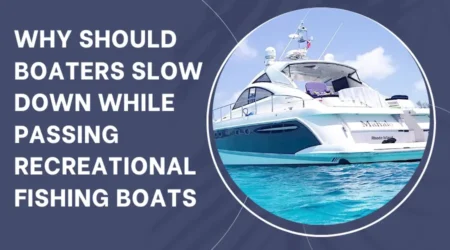What Is Beam Of Boat?
A beam of a boat is the width of the vessel at its widest point. This measurement is important for both stability and speed.
A wider beam means more stability, but also more drag and resistance to movement through water. A narrower beam means less stability, but also less drag and resistance to movement through water.
The ideal beam for a particular boat depends on many factors, including the type of water it will be used in, the weight and size of the boat, and the type of cargo or passengers it will be carrying.
Ultimately, the decision of what beam to use is up to the builder or designer of the boat. However, there are some general guidelines that can be followed in order to ensure that the beam is appropriate for the boat.
However, if the boat will be carrying lighter cargo, such as people or food, then a narrower beam is sufficient.
Ultimately, the decision of what beam to use for a particular boat is up to the builder or designer. However, these general guidelines can be followed in order to ensure that the beam is appropriate for the boat.
What Is the Origin of the Term “Beam”?
The term “beam” in boat is derived from the Old Norse word bjarmr, meaning “board” or “plank.”
This word was likely used to describe the long, thin boards that were used to construct the early Viking boats. Over time, the word came to be used more generally to refer to any large, sturdy piece of wood, such as the beams that support a house.
In the context of boats, beam refers to the widest point of the vessel, typically at the midpoint. This is where the term “beam width” comes from.
The width of a boat’s beam affects its stability and how it handles in different types of water to avoid boat collision. Wider beams make for a more stable boat, while narrower beams make the boat more maneuverable.
Ultimately, it’s up to the captain to decide what width is best for their vessel based on the conditions they’ll be sailing in.
How Can I Measure A Beam Of A Boat?

You can learn how to measure a boat’s beam very quickly. To compute the measures for you, you might always hire a marine surveyor. However, it helps if you can do it yourself, like with most things.
However, hiring a maritime surveyor is an excellent idea if you need a boat’s beam measurements for official reasons, such state or federal registration.
The stability of your boat in the water, its capacity for storage, and its ability to navigate obstacles in the water or via particular passages can all be better understood by knowing how wide its beam is.
You must first determine the boat’s centerline before you can measure the beam. The perpendicular distance between each gunwale can then be calculated.
What you’ll need for this procedure is:
To calculate the beam of your boat, simply follow these easy instructions.
What Is Beam Of Boat Measurement Steps
The boat’s back is known as the stern. You can find the centerline by measuring the stern and the bow, which is the point of the boat.
Measure the stern’s width using a tape measure. Next, divide the breadth by two to determine the stern’s midpoint. For instance, if the stern is 50 feet wide, the center point would be 25 feet away.
The stern’s midpoint can be identified with a pencil. Put some duct tape on the end of the string and place it at the center.
The front most portion of the boat is called the bow. It is typically pointed and curved, making it difficult to measure using a tape measure.
Simply locate the area of the boat that is pointed the greatest. The middle of the bow should be here. Mark this location with a pencil.
It is simple to determine the centerline of the boat once you have located the stern and bow’s centers.
Tape one end of the string to the middle of the stern. Then, drag the string ball toward the middle of the bow. Attach the string with tape to the indicated center of the bow.
The string’s whole length from the center of the bow to the center of the stern forms the boat’s midline. Keep the string taped down.
Find the area of your boat that is the broadest from one gunwale to the other by carefully inspecting it. The top edge of the ship’s hull is known as a gunwale.
The widest area of the majority of boats is located in the watercraft’s center. Additionally, it is where the waterline and hull meet.
Place the tape measure on one gunwale and extend it to the gunwale on the opposite side once you have determined the boat’s widest area visually.
The measuring tape must be parallel to the centerline that has been taped. Check that the tape measure is 90 degrees from the centerline using a carpet square.
The distance between the two parallel gunwales at their widest point is the boat’s beam. For accuracy, it’s best to conduct at least three beam measurements.
With the tape measure remains in position after taking the initial beam measurement, move it slightly ahead and take the subsequent beam measurement there.
Returning to the initial beam measurement, move the tape measure there. Then, slide it a little backward and measure the beam there as well.
Verify the broadest measurement among the three beams. The most precise boat beam measurement is the widest measurement.
Why Does A Boat’s Beam Matter?

Now that you are aware of the solution, what exactly is a boat’s beam? Why the heck does the beam of a boat matter, you ask? How may this easy measurement be of use to me?
In many circumstances, a boat’s beam is important. But understanding the stability of the ship is the most crucial aspect of the beam.
Making ensuring a boat is sturdy enough to handle the waters you want to explore is important while operating one. Small, narrow boats can’t maintain their stability in deep waters with big waves; they would probably capsize.
A boat with a wide beam has different stability than a boat with a narrow beam. Let’s examine how a boat’s beam influences stability in more detail.
Wide Beam Boats
Wider beam boats are typically more stable. In this context, stability refers to a boat’s resistance to the center of gravity.
Due to the weight of the cargo inside the boat, waves, or the direction of the wind, a boat’s center of gravity may move sideways as it travels through the water.
A boat’s stability will also be influenced by its volume, which is a component of the boat’s beam, in addition to these outside factors.
Wide-beam boats are more stable because the vessel volume is dispersed farther from the centerline. The boat’s stability often declines as the volume moves closer to the midline.
The secondary stability of the boat reduces as beam increases.
The capacity of a boat to avoid capsizing if it is inclined sideways is known as secondary stability.
The keel’s shape, in addition to the beam, affects a boat’s secondary stability. Curved keel boats offer greater secondary stability but risk losing fundamental stability.
On the other side, square-keeled boats have higher primary stability and lower secondary stability.
Pros Of Wide-Beam Boats
Cons Of Wide-Beam Boats
Narrow Beam Boats
In general, boats with a narrow beam are less stable and readily capsize when exposed to outside factors like winds and waves.
Positively, narrow beam vessels move through the water more quickly than wider beam vessels. The ability to safely navigate underwater obstacles is another benefit of narrow beam vessels.
They can easily sail through tiny canals.
Pros Of Narrow Beam Boats
Cons Of Narrow Beam Boats
Importance Of A Beam On A Boat

Beams are an essential part of a boat’s structure. They help to support the deck and provide a platform for other structures, such as the cabin or bridge.
Beams also play an important role in the stability of a boat. By distributing weight evenly, they help to prevent the boat from tipping over.
Finally, beams can also be used to attach other structures to the boat, such as sails or masts. In short, beams are a vital part of any boat’s design and construction. without them, a boat would not be able to function properly.
What Are Modern Boat Beams?
Beams on boats have come a long way since the early days of sailing. Nowadays, most beams are made out of lightweight and strong materials like aluminum or fiberglass.
This allows for a much lighter boat that is easier to maneuver and transport. Additionally, modern boat beams often have special features like built-in storage or integrated lighting.
So if you want for a modern and feature-rich beam for your boat, be sure to check out the latest offerings from your favorite boat manufacturer.
Relation Between Stability And The Beam
As beam boat becomes more and more stable, the range of operating conditions under which it can safely operate also increases.
The major contributor to this increased stability is the increase in the beam-to-length ratio of the boat. In other words, as a beam boat gets wider, it becomes more stable.
This relationship between stability and beam is because of two effects that work in opposite directions. The first is the righting moment, which increases as the beam increases.
This is the force that wants to return the boat to an upright position. The second effect is the metacentric height, which decreases as the beam increases. This is the force that wants to tip the boat over.
The righting moment is generated by the weight of the boat, and it acts at the center of gravity. The metacentric height is generated by the buoyancy of the boat, and it acts at the center of buoyancy.
These two forces are in balance when the boat is at rest, but when the boat starts to heel over, the righting moment becomes greater than the metacentric height and the boat rights itself.
The relationship between stability and beam can be seen in the following way:
In other words, as a beam boat gets wider, it becomes more stable. This is because the righting moment increases faster than the metacentric height decreases.
Beam boats are often used in applications where stability is important, such as in passenger ferries and barges.
They are also often used in racing, because a wider beam means more stability and thus less chance of capsizing.
The Relation Between A Boat’s Length And Beam

The length of a boat has a direct effect on the amount of beam that the boat has. The longer the boat, the more beam it will have.
This is because the length of the boat determines the size of the hull, and the hull is what gives the boat its shape. The wider the hull, the more beam the boat will have.
The length of a boat also has an indirect effect on the amount of beam that the boat has. This is because the longer the boat, the more weight it will have.
The extra weight will increase the righting moment, and thus make the boat more stable.
The relationship between stability and beam can be seen in the following way:
As boat gets longer, it becomes more stable. This is because the extra length increases the beam, and also because the extra weight increases the righting moment.
Length is often an important factor in boat design, because it affects both stability and Beam. In general, longer boats are more stable, but they may also be more difficult to maneuver.
Shorter boats are easier to maneuver, but they may be less stable.
The decision of how long to make a boat is often a trade-off between these two factors.
The relation between stability and beam can also be seen in the way that boats are classified. There are three main categories of boats: canoes, kayaks, and rowboats.
Canoes are the shortest and have the least beam. They are also the least stable. Kayaks are longer and have more beam.
They are more stable than canoes, but they are still not as stable as rowboats. Rowboats are the longest and have the most beam. They are the most stable of all three types of boats.
What’s The Difference Between Wider And Narrower Beams?

Beams are an important structural element in construction, providing support for everything from roofs to floors. They can be made from a variety of materials, including wood, steel, and concrete.
The width of a beam is an important factor in its strength. Wider beams can support more weight than narrower beams, but they also tend to be more expensive.
Narrower beams are often used in smaller projects, or in areas where weight is not as much of a concern. They are also typically easier to install than wider beams.
When choosing a beam for your project, it is important to consider the width of the span that needs to be supported. Wider beams can span longer distances than narrower beams, but they may not be necessary for shorter spans.
The type of material you use for your beam can also affect its width. Steel beams are typically wider than wood beams, for example.
In general, the wider the beam, the stronger it will be. However, there are other factors to consider when choosing a beam, such as cost and installation. Ultimately, the best beam for your project will depend on your specific needs.
Conclusion On Beam Of Boat
The beam of a boat is an important factor to consider when out on the water.
It affects the stability and handling of the vessel. A wider beam means more stability but can make the boat harder to maneuver.
A narrower beam gives the boat better handling but can make it more unstable.
Choose the right beam for your needs depending on the type of boat you have and the waters you’ll be sailing in.








